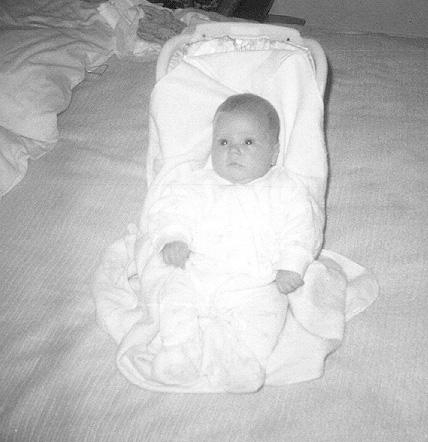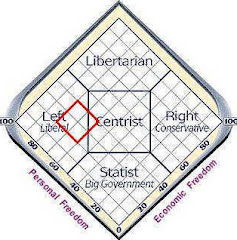"Kim" was Native American, an older non-traditional student, and she was from one of the poorest communities in America: a reservation. She came to my first diversity class with memories of her grandmother's stories. Her grandmother told Kim about when she was taken from her family as a small child, sent to boarding schools run by White Christians, and forced to abandon her language and religion. Kim was a bit afraid of white people.
"Tiffany" was a white woman from a rural town in a Midwest state. Her mother was an activist who through her Lutheran church participated actively during the Civil Rights movement. Her mother had been a high school teacher for years now, and shared stories with her daughter of violence and intimidation in the South. Tiffany felt she was educated on racial issues and she was proud to be a feminist.
"Luke" was a white man from Utah. He was Mormon, and deeply concerned about substance abuse. Though his religion forbid using alcohol, drugs, or even coffee (because of caffeine), he knew a lot of people in his hometown who fell into an addiction trap, including some family members. His experience with religious, ethnic, or racial diversity was highly limited, but he knew a lot about how diverse a group of White Mormons in Utah could be. He knew about those who condemned homosexuality, and he could not help but feel a bit judgmental himself. But, he was an avid reader, and he felt he understood the plight of oppressed people. He felt oppressed himself sometimes because of feeling his religion was under attack.
"Derrick" was a Black man. Don't say African-American, he thought that sounded stuffy. He was Black and proud. He was a religious Christian man, but he had also come out as gay about five years ago. His ex-wife and his teen daughter were accepting. They knew he had been trying to live a lie. His pastor had not been accepting, but he recently found a new church that accepted gay or lesbian members.
* * * * * *
Most students at colleges and universities today are required to take a human diversity course. Given that the United States advertises that it is open, tolerant, and brimming with diversity, educated adults are expected to know how to work with anyone. In the field of social work, the urgency of taking this type of class is obvious. A social work student is a professional in training. Professionals like lawyers, doctors, and social workers, abide by a Code of Ethics, and they are usually self-regulated by a professional organization. Typically, professionals are asked to move past personal biases to serve clients without discrimination, but this is a skill and it needs to be learned.
I taught Human Diversity to graduate social work students in a private elite university. On the first day of teaching this class, I looked out at the 30 diverse faces in my classroom, and asked myself, "What are you supposed to teach them?" Should I teach theories of social psychology or sociology about majority-minority group relations? Should I teach a smattering of facts about various groups? Given the emotional nature of the topic, should I just teach students how to talk about these issues without losing their emotional restraint? Sure, I had planned for class, made an elaborate syllabus, scoured for readings that helped people to develop empathy, but I was fearful of a class meltdown. Many people might think that a classroom of social workers-in-training would be homogeneous-- everyone ready to accept each other with bleeding hearts. Nope!
The truth is that I could arrange to have a class exclusively of white Christian women from the U.S. Midwest, and the diversity in the room would likely still be a source of conflict. The older women resentful of how the younger women take gender equality for granted when they put themselves on the line to fight for what improvements have been made since the 1970s. The Catholic women ready to pounce on abortion as a crime against humanity, while the Unitarians are exploding about someone trying to limit their rights. The liberals arguing with each other about whether pornography exploits or empowers women.
I settled on the basics for understanding other human beings: 1) teach students about critical thinking (how to analyze evidence, recognize assumptions, avoid pitfalls of human logical fallacies, etc.); 2) teach students enough history to provide context; and 3) teach students about relationship skills. All of this would mean reminding students that they would be tested emotionally, because this class was about transcending one's own experience and learning to empathize with the experience of others, even when the implications of "understanding" meant challenging one's own bedrock values.
In this type of heated classroom environment, the tiniest disagreement becomes amplified. One student states that everyone in America should be required to know English, and the bilingual students point out that everyone in America should be required to know more than one language. The best approach for handling the differences of opinion was to require students to go through the steps of critical thinking. As I had learned in high school debate, there is great value in being able to articulate perspectives from multiple sides of an issue.
I knew the goal was to help Kim, Tiffany, Luke, Derrick, and the others learn the tools for understanding each other so they could transfer these skills to their professional work. Kim was filled with fear and anger toward Christians and expressed dismay that Native American religions are widely co-opted or dismissed by majority Americans. Tiffany saw Christianity as a moral code that led to her family's crusade against oppression. Luke could not understand how families faced modern pitfalls without the community of believers he depended upon, and any historical problems with Christianity were in the past as far as he could see. Derrick had found support from his Christian faith to face racism, but he knew only too well that not all people were loved by Christians in the way Jesus demonstrated when he spent time with prostitutes.
To provide the actual lesson of diversity regarding Christianity and other religions, I provided articles and lectures on historical background. We read Jewish, Muslim, or other religious authors recounting the Crusades, the Holocaust, and the dessication of the Native religions through "missionary" schools. Next, I provided the framework for understanding how individuals benefit or become harmed by current infrastructure linked to past wrongdoings. Slavery ended approximately 125 years ago, but White people deliberately broke up slave families, so how long would it take to re-create a functional family unit? Many African-Americans learn from studying their history that not only did Whites split their families to prevent a slave uprising, but only decades after the practice ended, the Whites were already complaining about the weakness of the "Black Family." (see Senator Daniel Monyihan's congressional testimony from the 1950s). Conservative organizations were blaming African Americans for a situation that their ancestors promoted.
Being part of a religious majority in the United States means taking for granted that your holidays will be honored by the government, your communities have lots of choices for places to worship, and commercial outfits decorated with symbols of your faith. This was neither "good" nor "bad" but it was real. In private places, students knew that religion was up to individuals, but what about public places? Could Christians learn to share the public space with people of other minority faiths without feeling that they were "under attack" for seeing a Star of David next to their nativity scene next to the city hall?
In the end, nearly every student reported that he or she DID learn a lot of negative things about the dominant culture in many different categories from religion to gender to socioeconomic status, but they were no less invested in being part of the dominant culture. They had new tools for going out and improving it. By virtue of their increased depth of understanding, they listened to each other, empathized, and realized that maturity, development, and growth required shaking up dusty unexamined belief systems.
If you scan the Internet, you can find all of the degrees of human interactions from open conflict and hostility to empathy and support. Sometimes, the weight of the negativity between individuals/groups is disheartening and leads to pessimism about humans achieving peace in the future. However, after teaching this class, I learned that students can learn to appreciate the faults and strengths of their own groups, and they CAN learn the skills to respect multiple cultures.
Tuesday, November 20, 2007
Teaching Diversity to U.S. College Students
Posted by
DMF
at
3:08 PM
![]()
Labels: college students, diversity, multiculturalism, oppression, social work
Subscribe to:
Post Comments (Atom)


No comments:
Post a Comment